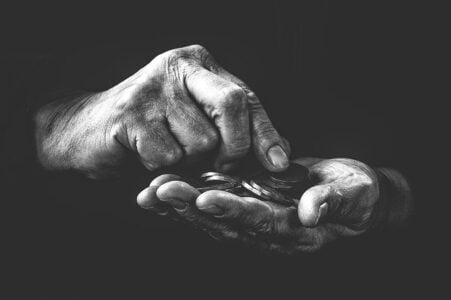Deendayal Antoyaday Yojana and National Rural Livelihoods Mission
Context:
The recent rapid surge in COVID-19 cases, including in tier 2 and 3 towns, requires immediate action to contain spread of the virus. Deendayal Antoyaday Yojana- National Rural Livelihoods Mission, Ministry of Rural Development has initiated online trainings, in a cascading mode, for its vast network of over 69 lakh Self-Help Groups (SHG). This is to spread awareness through key messaging on COVID-19 vaccination, COVID-19 appropriate behaviours, health seeking behaviour and immunity building.
Deen Dayal Upadhyaya Antyodaya Yojana
- Deen Dayal Antyodaya Yojana or DAY is one of the Government of India scheme for helping the poor by providing skill training. It replaces Aajeevika.
- The Government of India has provisioned ₹500 crore (US$70 million) for the scheme.
- The objective of the scheme is to train 0.5 million people in urban areas per annum from 2016. In rural areas the objective is to train 1 million people by 2017.
- Further, in urban areas, services like SHG promotion, training centres, vendors markets, and permanent shelters for homeless. The aim of the scheme is skill development of both rural and urban India as per requisite international standards.
History
- The initial scheme Swarnajayanti Gram Swarozgar Yojana (SGSY) was launched in 1999.
- It was renamed as National Rural Livelihood Mission in 2011. Finally they were merged into DDU-AY.
- The SGSY was somewhat intended to provide self-employment to millions of villagers.
- The programme aims at bringing the assisted poor families above the poverty line by organising them into self-help groups (SHGs) through a mix of bank credit and government subsidy.
- The main aim of these SHGs was to bring these poor families above the poverty line and concentrate on income generation through combined effort.
- The Swarna Jayanti Swarozgar Yojna (SGSY) has been renamed as National Rural Livelihood Mission (NRLM). With this the scheme will be made universal, more focussed and time bound for poverty alleviation by 2014.
National Rural Livelihood Mission
- National Rural Livelihood Mission (NRLM) is a poverty alleviation project implemented by Ministry of Rural Development, Government of India.
- This scheme is focused on promoting self-employment and organization of rural poor.
- The basic idea behind this programme is to organize the poor into SHG (Self Help Groups) groups and make them capable for self-employment.
- In 1999 after restructuring Integrated Rural Development Programme(IRDP), Ministry of Rural Development (MoRD) launched Swarnajayanti Grameen Swarojgar Yojana (SGSY) to focus on promoting self-employment among rural poor.
- SGSY is now remodeled to form NRLM thereby plugging the shortfalls of SGSY programme.
- This scheme was launched in 2011 with a budget of $5.1 billion and is one of the flagship programmes of Ministry of Rural Development.
- This is one of the world’s largest initiatives to improve the livelihood of poor. This programme is supported by the World Bank with a credit of $1 Billion.
- The scheme was succeeded by Deen Dayal Antyodaya Yojana on 25 September 2015.
Guiding Principles
- Poor have a strong desire to come out of poverty, and they have innate capabilities .
- An external dedicated and sensitive support structure is required to induce the social mobilization, institution building and empowerment process.
- Facilitating knowledge dissemination, skill building, access to credit, access to marketing, and access to other livelihoods services enables them to enjoy a portfolio of sustainable livelihoods.
Values
The core values which guide all the activities under NRLM are as follows:
- Inclusion of the poorest, and meaningful role to the poorest in all the processes
- Transparency and accountability of all processes and institutions.
- Ownership and key role of the poor and their institutions in all stages – planning, implementation, and, monitoring
Major Features of DAY-NRLM
The chief features of the scheme are as follows:
- Universal social mobilization: A minimum of one lady member of a rural poor household (with particular emphasis on the marginal sections) is to be brought in the network of an SHG.
- Participatory Identification of Poor
- Community Funds as Resources in Perpetuity: this is to strengthen the financial management capacity of the poor
- Financial inclusion
- Livelihoods: the mission focuses on promoting and stabilizing the existing livelihood structures of the poor through its three pillars
- Vulnerability reduction & Livelihoods enhancement – through expanding existing livelihoods and tapping new livelihood opportunities in both the farm and non-farm sectors
- Employment – building skills
- Enterprises – promoting self-employment
- Another important feature of this scheme is that it places a high priority on convergence and partnerships with other government schemes of the Rural Development Ministry. It also seeks to have linkages with the Panchayati Raj institutions.
Sub-schemes under NRLM
- Aajeevika Grameen Express Yojana (AGEY)
- Mahila Kisan Sashaktikaran Pariyojana (MKSP)
- Start-up Village Entrepreneurship Programme (SVEP)
- National Rural Livelihoods Project (NRLP)

